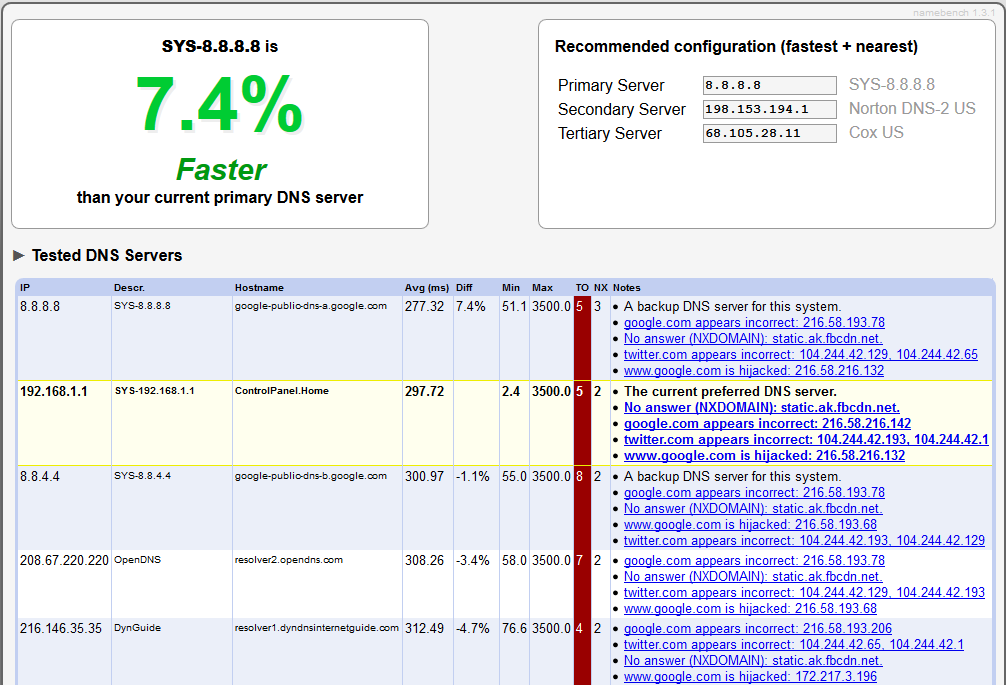
NAMEBENCH WINDOWS 8 KEYGEN

In case of generating symbolic number having 15 or more digits, quotation marks are used to represent the numbers with optimum accuracy. Hence in order to extract symbolic expressions with respect to expressions, sym() needs to be applied on subexpressions instead of the entire expression to achieve better accuracy.Įxample #6 – Generating Large Symbolic Numbers MATLAB enables its program to create multidimensional array containing symbolic elements at one time, using sym() function.Įxample #5 – Converting Expressions to Symbolic ExpressionsĪpplication of sym() function on the complete expressions makes the conversion inaccurate as MATLAB converts the expression to a floating-point number, which results in reducing accuracy and recovery of the lost accuracy is not possible by sym() all the time. Var1=sym('var1')var2=sym('var2')var3=sym('var3')Įxample #4 – Create Symbolic Multidimensional Arrays It temporarily replaces the name for built-in numeric function having the same name.įollowing are the examples of matlab sym() are given below: Example #1 The variable is created as a workspace variable to hold the symbolic value given within the sym() function. create symbolic numbers which enable the program to avoid floating-point approximations.
assume and assumeAlso: Add further flexibility for applying assumptions on the variable.Įxpressions such aspi = sym(pi),theta = sym(‘1/10’) etc. clear all: clears all MATLAB workspace objects resetting the symbolic engine. assume(x,’clear’): all assumptions that affect x, are being removed. Hence, to remove assumptions, one of the below options is recommended: In the case of multidimensional arrays, sym() function generates automatically generated elements, having the prefix followed by the index for the element being added with ‘ _’ as a delimiter.Īdding the command ‘clear x’ actually does not clear the symbolic object with respect to assumptions associated with the variable, such as real, positive, or any assumptions, etc. This command can be used to create a symbolic expression or matrix Expr_sym from an anonymous MATLAB function associated with the function handle h. This command can be used to convert a character string or vector, given as str_num, to an accurate symbolic number that avoids any approximation. This command can be used to use the technique being specified by ‘flag’ to convert floating-point numbers into symbolic numbers. This command can be used to convert any number or a numeric matrix, specified as numb, to corresponding symbolic number or matrix with symbolic elements. This command can be used to clear assumptions that are set on any symbolic variable or an array. This command can be used to create any symbolic variable or an array, setting the assumption that the variable or the array elements belong to the‘set’. This command can be used to create an array of symbols of sizen-by-n consisting of automatically generated elements. the symbolic variables in the MATLAB workspace: a1, a2, and a3. In order to assign also the automatically generated elements of MAT, the syms function needs to be used instead of sym(). When the syntax MAT = sym(‘mat’,) is used, only the symbolic array MAT gets assigned to the MATLAB workspace by the sim() function. This command can be used to create an array of symbols of size n1-by-…-by-nM consisting of automatically generated elements. This command can be used to create a symbolic variable’. 
Syntax of matlab sym() is given: below: Syntax Hadoop, Data Science, Statistics & others Syntax of Matlab sym()






 0 kommentar(er)
0 kommentar(er)
